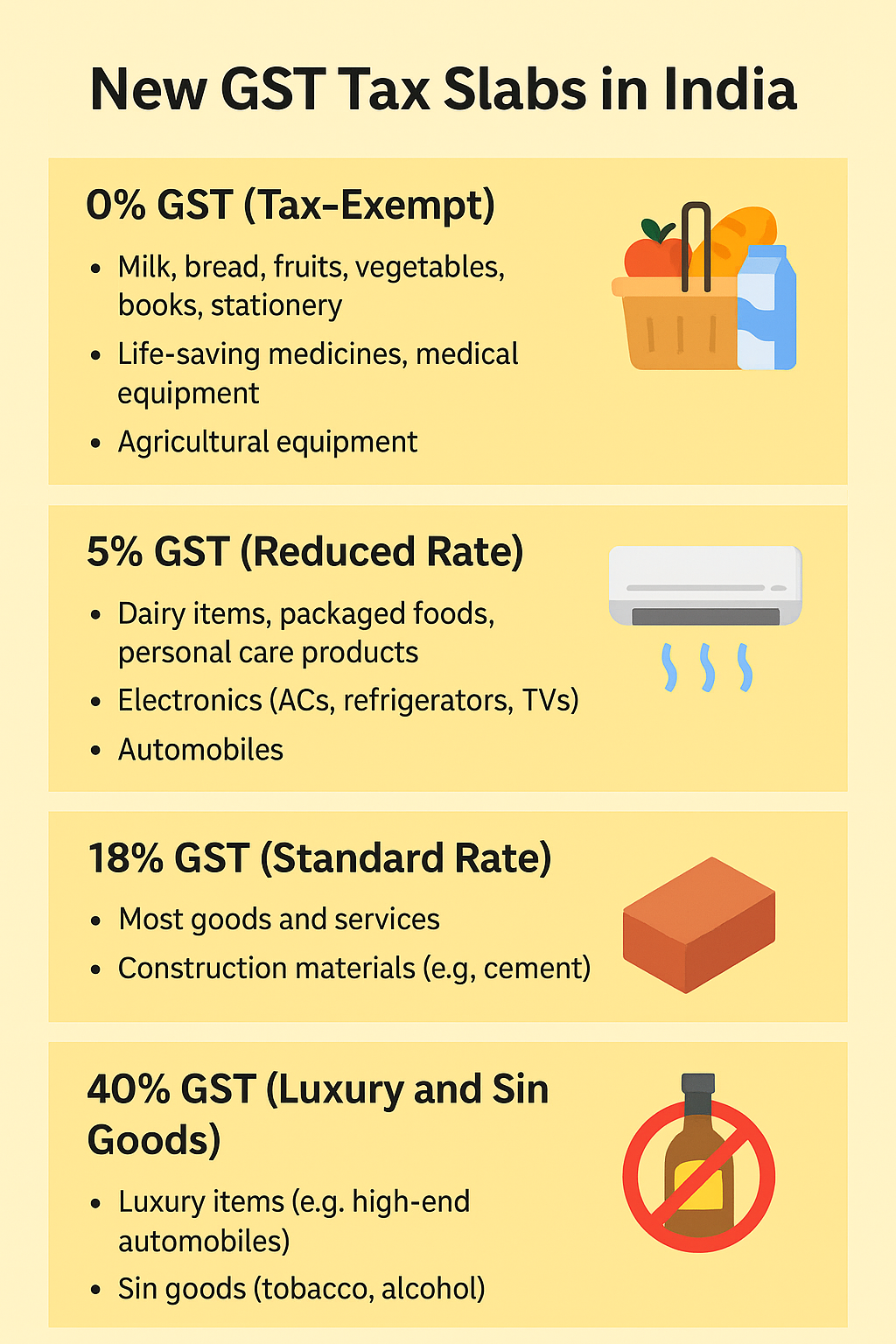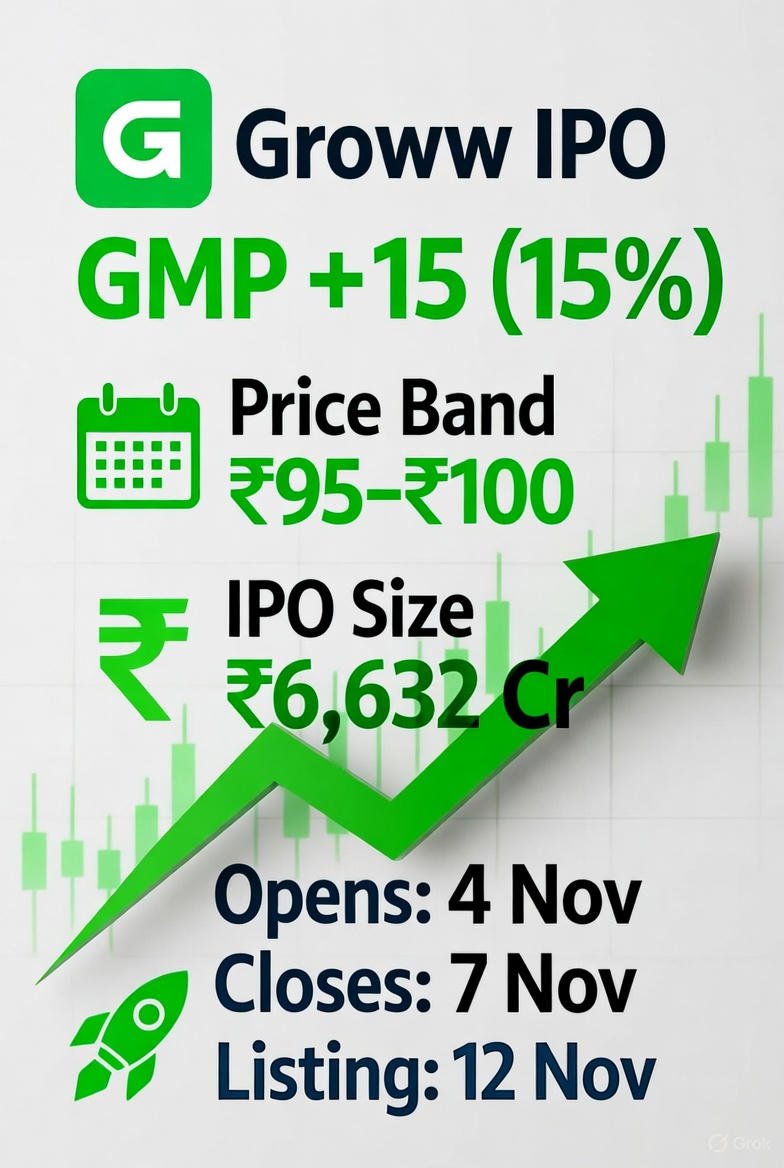
The New GST Tax Slabs in India: What You Need to Know
The Indian government has recently implemented GST 2.0, a major overhaul of the Goods and Services Tax (GST) system, effective September 22, 2025. This reform aims to simplify the tax structure, make compliance easier for businesses, and reduce costs for consumers. Let’s explore what these changes mean for you and your business.
What is GST 2.0?
GST 2.0 is an upgraded version of India’s GST system designed to streamline tax rates, reduce the burden on essential goods, and increase taxes on luxury and sin items. The new framework simplifies multiple slabs into four main categories: 0%, 5%, 18%, and 40%.
New GST Slabs Explained
1. 0% GST (Tax-Exempt Items)
Certain essential items are now completely exempt from GST:
-
Milk, bread, fruits, vegetables, books, and stationery
-
Life-saving medicines and medical equipment
-
Agricultural equipment like tractors and drip irrigation systems
This move aims to reduce the cost of everyday essentials and provide relief to low-income households.
2. 5% GST (Reduced Rate)
This slab targets common consumer goods and some electronics:
-
Daily-use products such as dairy items, packaged foods, and personal care products
-
Electronics like air conditioners, refrigerators, and TVs
-
Automobiles, including small cars and two-wheelers
The reduced rate will lower prices on everyday items and make technology more accessible.
3. 18% GST (Standard Rate)
The standard GST rate applies to:
-
Most goods and services not covered under other slabs
-
Construction materials like cement
-
Life and health insurance premiums (now tax-exempt)
-
Certain education materials and farm equipment
This rate remains the most common for general goods and services.
4. 40% GST (Luxury and Sin Goods)
Luxury and sin goods now carry a higher tax to discourage consumption and generate revenue:
-
Premium cars and high-end products
-
Tobacco, alcohol, and online betting platforms
This slab helps the government offset revenue losses from reduced rates on essentials.
Why the GST Overhaul Matters
The GST reforms are designed to:
-
Lower costs for everyday essentials and daily-use items
-
Encourage spending on consumer goods and electronics
-
Simplify compliance for businesses
-
Boost competitiveness for Indian industries
While the government expects a net revenue impact of around ₹48,000 crore, the reforms are projected to stimulate consumer spending and improve overall economic activity.
Key Takeaways
-
Essentials: Tax-free (0%)
-
Daily-use & electronics: 5% GST
-
General goods & services: 18% GST
-
Luxury & sin goods: 40% GST
Businesses and consumers alike should review the new rates carefully to plan purchases, pricing, and compliance accordingly.
Final Thoughts
The GST 2.0 reforms represent a significant step toward simpler taxation and economic growth. Consumers benefit from lower prices on essentials, while businesses gain clarity on tax obligations. Keeping updated on these changes is crucial for financial planning and compliance.
Q1: What are the new GST tax slabs in India?
A: Under GST 2.0, the slabs are simplified into four categories: 0%, 5%, 18%, and 40%.
Q2: Which items are exempt from GST now?
A: Essentials like milk, bread, fruits, vegetables, books, life-saving medicines, and agricultural equipment are under the 0% GST slab.
Q3: What comes under the 5% GST slab?
A: Daily-use products, packaged foods, personal care items, some electronics (TVs, ACs, refrigerators), and small cars/two-wheelers.
Q4: What is taxed at 18% GST?
A: Most goods and services, including cement, consumer goods, and general services, fall under the standard 18% slab.
Q5: Which products fall under the 40% GST slab?
A: Luxury cars, premium products, tobacco, alcohol, and online betting platforms are taxed at 40%.
Q6: Why did the government introduce GST 2.0?
A: To simplify taxation, lower the burden on essentials, encourage spending, and balance revenue with higher taxes on luxury and sin goods.
Q7: How will GST 2.0 affect consumers?
A: Essentials become cheaper, electronics and automobiles see reduced tax, while luxury goods and harmful products become costlier.
Tranding




